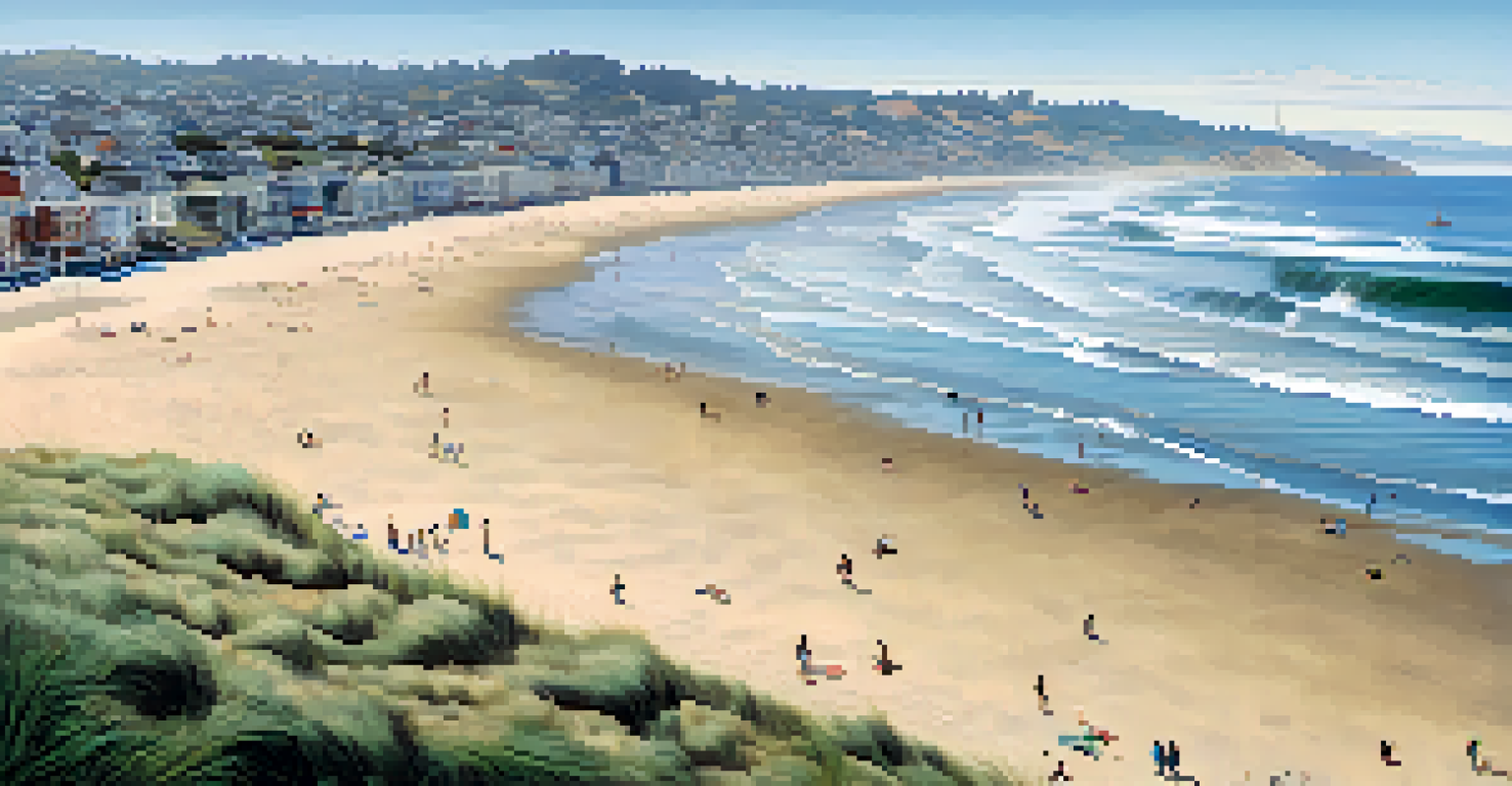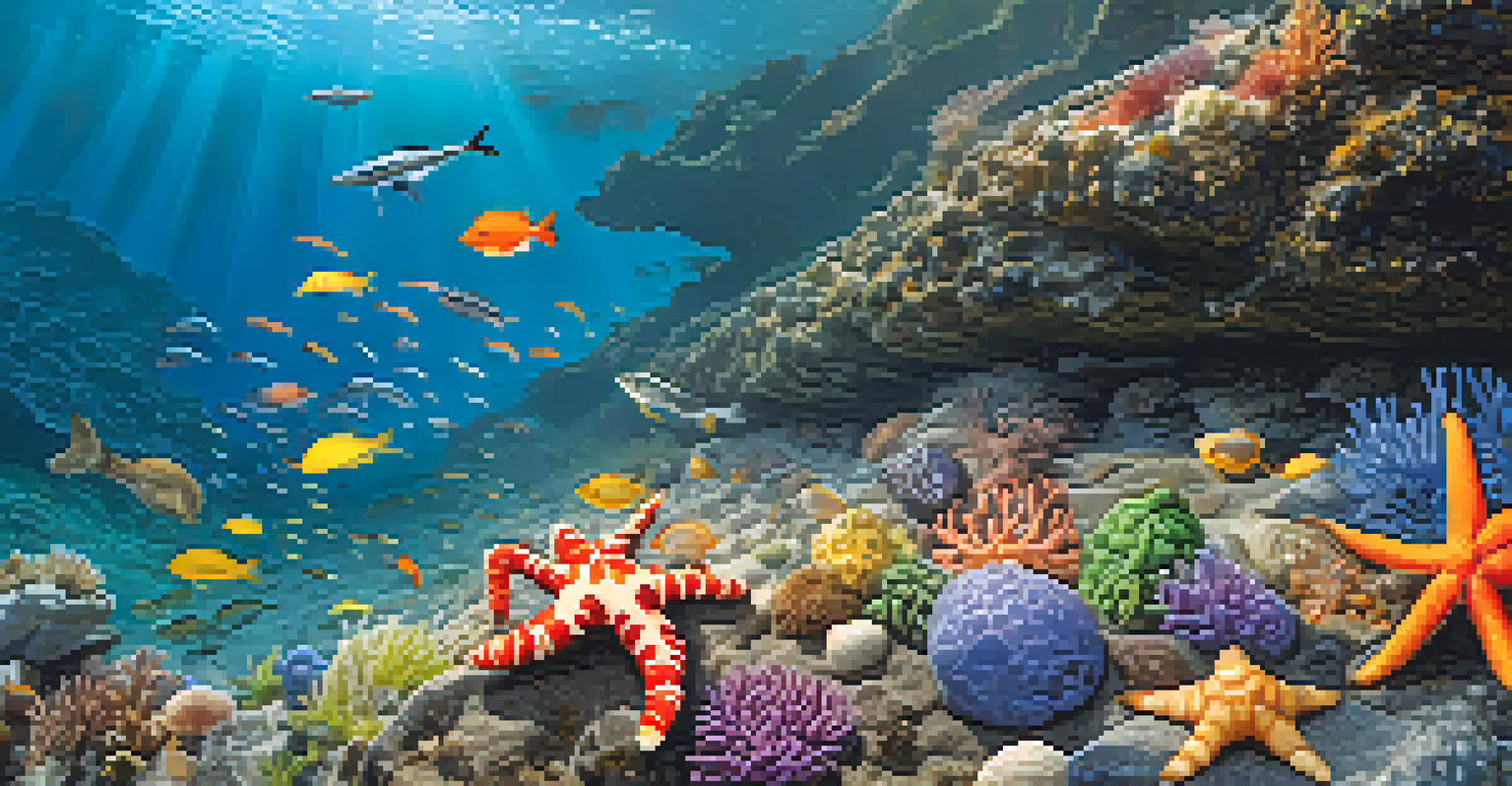Climate Change Effects on San Francisco's Coastal Areas

Rising Sea Levels Threatening Coastal Infrastructure
San Francisco's coastal areas are increasingly vulnerable to rising sea levels, which pose a significant risk to infrastructure. As global temperatures rise, glaciers and ice caps are melting, contributing to the gradual increase in ocean levels. This phenomenon can lead to flooding during high tides and storms, threatening homes, businesses, and crucial transportation routes.
We do not inherit the earth from our ancestors; we borrow it from our children.
For instance, neighborhoods like Mission Bay are already experiencing minor flooding during heavy rain events. The city's iconic waterfront, which attracts millions of visitors, may also face increased erosion and damage over time. If left unchecked, the rising waters could lead to costly repairs and even relocation of businesses and residents.
Local officials are aware of these challenges and are actively working on strategies to mitigate the impact. Initiatives include enhancing coastal defenses and investing in sustainable infrastructure. However, the urgency to act grows as projections suggest that sea levels could rise significantly by the end of the century.
Increased Erosion Along San Francisco's Shores
Erosion is another consequence of climate change that affects San Francisco's coastal areas. As sea levels rise and storm frequency increases, the natural protective barriers along the coast are eroded more rapidly. This not only affects the landscape but also the ecosystems that thrive in these coastal environments.

Take Ocean Beach, for example, where significant erosion has led to the loss of sand and habitat for local wildlife. The beauty of this beach is at risk, with potential impacts on local tourism and biodiversity. If erosion continues unchecked, it could alter the coastline dramatically, impacting both natural habitats and human activities.
Rising Sea Levels Threaten Infrastructure
San Francisco's coastal infrastructure is at significant risk due to rising sea levels, leading to flooding and erosion.
To combat erosion, local authorities are exploring various solutions, including beach nourishment and the construction of barriers. However, these measures require substantial funding and long-term planning. The challenge lies in balancing immediate needs with sustainable practices that will protect these areas for future generations.
Impact of Ocean Acidification on Marine Life
Ocean acidification, a lesser-known effect of climate change, is increasingly threatening marine ecosystems off San Francisco's coast. As the ocean absorbs more carbon dioxide, its pH levels drop, making it more acidic. This shift can have dire consequences for shellfish and other marine species that rely on calcium carbonate to build their shells.
The greatest threat to our planet is the belief that someone else will save it.
For example, local fisheries that depend on oysters and clams are already feeling the pressure. If these species continue to struggle, it could lead to decreased catches and economic losses for fishermen. Additionally, the entire food web is affected, as many marine species rely on shellfish for food.
To address this issue, scientists are studying the potential impacts and exploring ways to mitigate acidification. Community awareness and education are essential, as they can foster support for sustainable fishing practices and conservation efforts. Protecting these marine ecosystems is crucial for maintaining both biodiversity and local livelihoods.
Changes in Local Weather Patterns and Their Effects
Climate change is altering local weather patterns, bringing unpredictable weather to San Francisco's coastal areas. Residents have noticed more extreme weather events, including heavier rainfall, stronger winds, and unusual temperature fluctuations. These changes can affect daily life, agriculture, and even energy consumption.
For instance, the increased frequency of heavy rain can lead to flooding, impacting transportation and infrastructure. It can also strain the city's drainage systems, leading to potential public health concerns. Meanwhile, the warmer temperatures can lead to extended periods of drought, affecting local water supplies and agriculture.
Erosion Impacts Coastal Ecosystems
Increased erosion along San Francisco's shores threatens local wildlife habitats and tourism, necessitating urgent protective measures.
San Francisco's residents and local authorities are adapting to these changes by investing in resilient infrastructure and promoting water conservation practices. By understanding these weather patterns, the community can better prepare for future challenges and protect the city's unique environment.
Threats to Coastal Wildlife Due to Habitat Loss
As climate change affects San Francisco's coastal areas, local wildlife faces increasing threats from habitat loss. Rising sea levels and erosion can diminish the natural habitats that support various species, including migratory birds and marine mammals. The delicate balance of these ecosystems is disrupted, leading to potential declines in wildlife populations.
For example, wetlands along the coast provide crucial breeding and feeding grounds for numerous bird species. As these areas shrink, birds may struggle to find suitable nesting sites, leading to reduced reproduction rates. This loss of biodiversity can have ripple effects throughout the ecosystem, impacting everything from food chains to recreational opportunities for residents.
Conservation efforts are essential to protect these habitats and the wildlife that depend on them. Local organizations are working to restore degraded areas and create protected zones. Engaging the community in these efforts fosters a shared responsibility for preserving San Francisco's rich natural heritage.
Economic Implications of Climate Change on Coastal Areas
The economic implications of climate change on San Francisco's coastal areas are profound and far-reaching. With rising sea levels, increased flooding, and damage to infrastructure, the costs of climate adaptation and mitigation can be staggering. Local businesses, particularly those in tourism and fishing, are likely to feel the impact directly.
For instance, iconic tourist attractions along the waterfront could face disruptions or even closures due to flooding and erosion. This could lead to a decrease in visitor numbers and revenue for local shops and restaurants. Additionally, the fishing industry may suffer due to declining fish populations and changing ocean conditions, further straining the local economy.
Economic Effects of Climate Change
The local economy, particularly tourism and fishing, faces serious challenges from climate change impacts like flooding and habitat loss.
To address these economic challenges, San Francisco is exploring sustainable practices and investments in green infrastructure. By focusing on resilience and adaptation, the city can not only protect its economy but also create new job opportunities in emerging sectors like renewable energy. A proactive approach will be crucial in ensuring long-term economic stability.
Community Awareness and Engagement on Climate Issues
Community awareness and engagement are vital in addressing the climate change challenges facing San Francisco's coastal areas. As residents become more informed about the effects of climate change, they can take meaningful action to support local initiatives and advocacy efforts. This collective awareness can drive change at both grassroots and governmental levels.
For instance, local workshops and educational programs can help residents understand the importance of coastal protection and sustainable practices. By empowering the community to engage in discussions around climate adaptation, residents can influence policies that prioritize environmental protection. This engagement fosters a sense of ownership and responsibility for the local environment.

Moreover, collaboration between community members, local organizations, and government agencies can lead to more effective solutions. Together, they can develop innovative strategies to address the pressing issues posed by climate change. Building a united front will be essential in ensuring the resilience of San Francisco's coastal areas for generations to come.